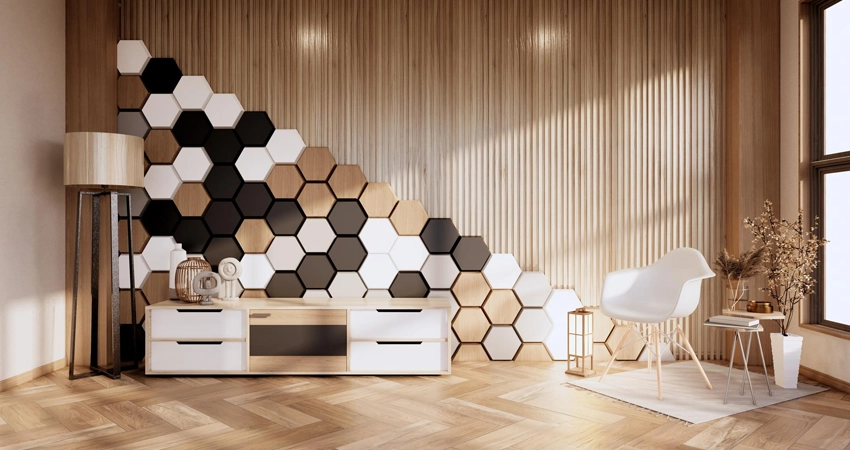Vertical Wall Paneling: A Comprehensive Guide to Transforming Your Space
Vertical wall paneling is a timeless design element that has been used for centuries to enhance the aesthetic appeal and functionality of interior and exterior spaces. From traditional wood paneling to modern, innovative materials, vertical wall paneling offers a versatile solution for homeowners, designers, and architects looking to create visually striking and durable surfaces. This article will explore the history, types, benefits, installation process, and design ideas for vertical wall paneling, providing you with a comprehensive guide to transforming your space.
Table of Contents
- History of Vertical Wall Paneling
- Types of Vertical Wall Paneling
- Wood Paneling
- MDF Paneling
- PVC Paneling
- Metal Paneling
- Acoustic Paneling
- 3D Paneling
- Benefits of Vertical Wall Paneling
- Aesthetic Appeal
- Durability and Longevity
- Insulation and Acoustics
- Easy Maintenance
- Versatility in Design
- Choosing the Right Vertical Wall Paneling for Your Space
- Consider the Room’s Function
- Match the Style and Theme
- Evaluate the Material’s Properties
- Budget Considerations
- Installation Process of Vertical Wall Paneling
- Tools and Materials Needed
- Preparing the Wall Surface
- Measuring and Cutting the Panels
- Installing the Panels
- Finishing Touches
- Design Ideas and Inspirations
- Living Room
- Bedroom
- Kitchen
- Bathroom
- Office
- Exterior Applications
- Maintenance and Care for Vertical Wall Paneling
- Cleaning Tips
- Repairing Damaged Panels
- Preventing Moisture Damage
- Environmental Considerations
- Sustainable Materials
- Energy Efficiency
- Recycling and Disposal
- Future Trends in Vertical Wall Paneling
- Smart Paneling
- Biophilic Design
- Customization and Personalization
- Conclusion
1. History of Vertical Wall Paneling
Vertical wall paneling has a rich history that dates back to ancient civilizations. Early examples of wall paneling can be traced to the Egyptians, who used wooden panels to decorate their tombs and temples. The Greeks and Romans also adopted wall paneling, using marble and other stone materials to create intricate designs in their buildings.
During the Middle Ages, wall paneling became a symbol of wealth and status. Nobles and royalty adorned their castles and manor houses with elaborate wooden panels, often carved with intricate patterns and motifs. The Renaissance period saw a resurgence of wall paneling, with artists and craftsmen creating masterpieces that combined functionality with artistic expression.
In the 18th and 19th centuries, wall paneling became more accessible to the middle class, thanks to advancements in manufacturing and transportation. The Victorian era, in particular, saw the widespread use of wall paneling in homes, with a focus on ornate designs and dark, rich woods.
Today, vertical wall paneling continues to evolve, with new materials and technologies allowing for greater creativity and customization. From traditional wood panels to modern, eco-friendly options, vertical wall paneling remains a popular choice for enhancing the beauty and functionality of any space.
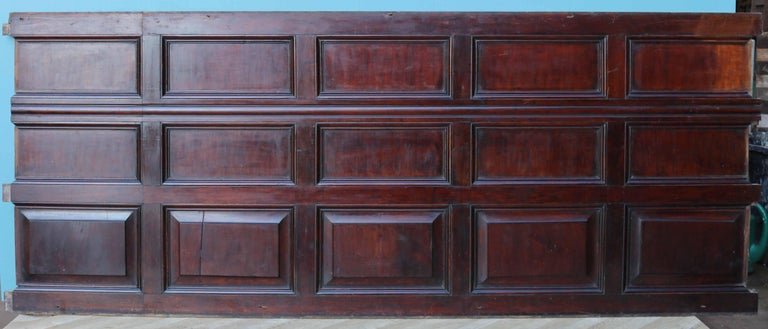
2. Types of Vertical Wall Paneling
Wood Paneling
Wood paneling is the most traditional and classic form of vertical wall paneling. It is available in a variety of wood species, including oak, pine, cedar, and walnut, each offering unique grain patterns and colors. Wood paneling can be stained, painted, or left natural to showcase its natural beauty.
Pros:
- Timeless aesthetic
- Durable and long-lasting
- Can be refinished or repainted
Cons:
- Susceptible to moisture damage
- Requires regular maintenance
- Higher cost compared to other materials
MDF Paneling
Medium-density fiberboard (MDF) paneling is a cost-effective alternative to solid wood. Made from compressed wood fibers, MDF panels are smooth, uniform, and easy to paint. They are often used in modern and contemporary interiors.
Pros:
- Affordable
- Smooth surface for painting
- Resistant to warping and cracking
Cons:
- Not as durable as solid wood
- Susceptible to moisture damage
- Heavier than other materials
PVC Paneling
PVC (polyvinyl chloride) paneling is a lightweight, durable, and moisture-resistant option that is ideal for bathrooms, kitchens, and other high-humidity areas. PVC panels are available in a wide range of colors and finishes, including wood and stone effects.
Pros:
- Waterproof and moisture-resistant
- Easy to clean and maintain
- Lightweight and easy to install
Cons:
- Less eco-friendly due to plastic content
- Can look less natural compared to wood
- May not be suitable for high-temperature areas
Metal Paneling
Metal paneling, typically made from aluminum or steel, is a modern and industrial option for vertical wall paneling. It is often used in commercial spaces, but can also add a unique touch to residential interiors.
Pros:
- Durable and long-lasting
- Fire-resistant
- Modern and industrial aesthetic
Cons:
- Can be prone to dents and scratches
- Higher cost
- May require professional installation
Acoustic Paneling
Acoustic paneling is designed to improve sound quality by reducing noise and echo in a room. These panels are often used in home theaters, recording studios, and offices.
Pros:
- Improves sound quality
- Available in various designs and materials
- Can be customized to fit any space
Cons:
- May be more expensive than standard paneling
- Limited aesthetic options
- Requires professional installation for optimal performance
3D Paneling
3D paneling adds depth and texture to walls, creating a visually striking effect. These panels are made from various materials, including gypsum, MDF, and PVC, and can be painted or finished to match any decor.
Pros:
- Adds visual interest and texture
- Can be customized to fit any design
- Available in a variety of materials
Cons:
- May be more difficult to clean
- Higher cost compared to flat panels
- Requires careful installation to achieve the desired effect

3. Benefits of Vertical Wall Paneling
Aesthetic Appeal
Vertical wall paneling can transform a plain, boring wall into a focal point of a room. Whether you choose traditional wood panels or modern 3D designs, paneling adds texture, depth, and character to any space.
Durability and Longevity
High-quality wall paneling is built to last. Materials like wood, metal, and PVC are resistant to wear and tear, making them a durable choice for both interior and exterior applications.
Insulation and Acoustics
Wall paneling can improve the insulation and acoustics of a room. Wood and MDF panels provide additional insulation, helping to keep a room warm in the winter and cool in the summer. Acoustic panels, on the other hand, reduce noise and echo, creating a more comfortable and peaceful environment.
Easy Maintenance
Most wall paneling materials are easy to clean and maintain. PVC and metal panels, in particular, require minimal upkeep and can be wiped clean with a damp cloth. Wood panels may require occasional refinishing, but with proper care, they can last for decades.
Versatility in Design
Vertical wall paneling is incredibly versatile and can be used in a variety of settings. From traditional to modern, rustic to industrial, there is a paneling option to suit every style and taste.
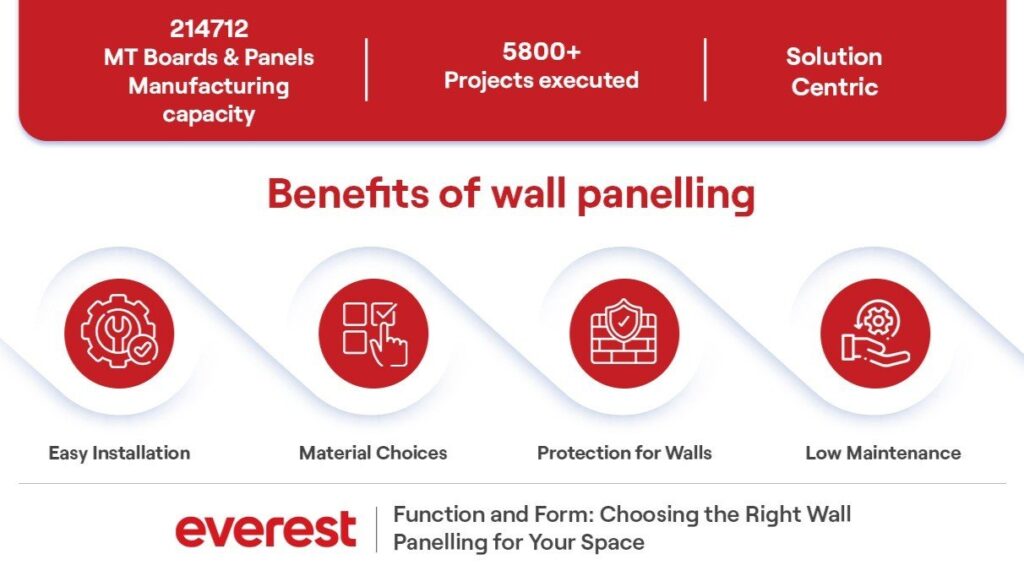
4. Choosing the Right Vertical Wall Paneling for Your Space
Consider the Room’s Function
The function of the room should guide your choice of wall paneling. For example, moisture-resistant materials like PVC are ideal for bathrooms and kitchens, while acoustic panels are best suited for home theaters and offices.
Match the Style and Theme
Choose paneling that complements the overall style and theme of your space. Traditional wood panels work well in classic and rustic interiors, while sleek metal or 3D panels are better suited for modern and contemporary designs.
Evaluate the Material’s Properties
Consider the properties of the material, such as durability, maintenance requirements, and resistance to moisture and temperature changes. This will help you choose a paneling option that will perform well in your specific environment.
Budget Considerations
Wall paneling is available at a wide range of price points, so it’s important to consider your budget when making a decision. While solid wood panels may be more expensive, MDF and PVC options offer a more affordable alternative without compromising on quality.
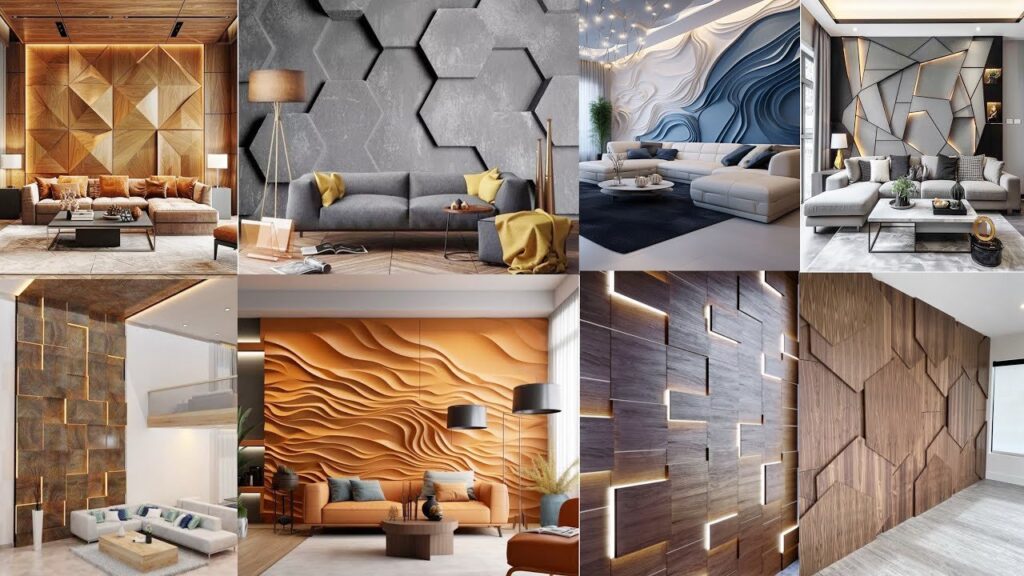
5. Installation Process of Vertical Wall Paneling
Tools and Materials Needed
Before you begin the installation process, gather all the necessary tools and materials, including:
- Wall panels
- Adhesive or nails
- Measuring tape
- Level
- Saw
- Sandpaper
- Paint or stain (if applicable)
Preparing the Wall Surface
Ensure that the wall surface is clean, dry, and smooth before installing the panels. Remove any existing wallpaper or paint, and fill in any holes or cracks with filler.
Measuring and Cutting the Panels
Measure the wall and cut the panels to fit. Use a saw to make precise cuts, and sand the edges to ensure a smooth finish.
Installing the Panels
Start at one corner of the wall and work your way across, applying adhesive or nailing the panels in place. Use a level to ensure that each panel is straight and evenly spaced.
Finishing Touches
Once all the panels are installed, apply paint or stain if desired. Add any additional trim or molding to complete the look.
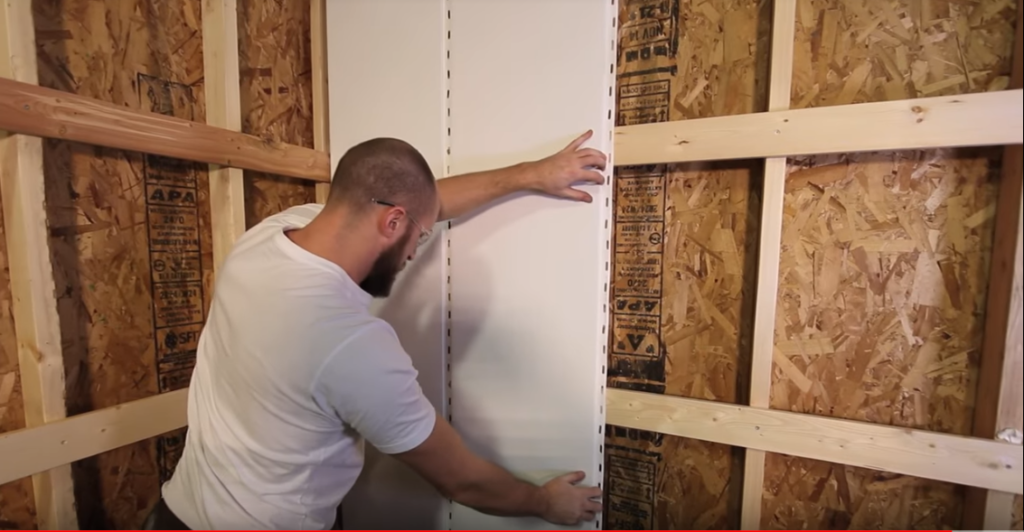
6. Design Ideas and Inspirations
Living Room
Vertical wall paneling can add warmth and texture to a living room. Consider using wood panels to create a cozy, rustic atmosphere, or opt for sleek, painted MDF panels for a more modern look.
Bedroom
In the bedroom, wall paneling can create a focal point behind the bed. Choose a material and finish that complements your bedding and furniture, and consider adding lighting to highlight the texture of the panels.
Kitchen
In the kitchen, moisture-resistant PVC or metal panels are a practical choice. Use them to create a backsplash or to add interest to a feature wall.
Bathroom
Vertical wall paneling is an excellent choice for bathrooms, where moisture resistance is key. PVC panels with a wood or stone effect can create a spa-like atmosphere.
Office
In a home office, acoustic panels can help reduce noise and create a more productive environment. Choose panels in a color or finish that complements your desk and furniture.
Exterior Applications
Vertical wall paneling is not just for interiors. Use weather-resistant materials like cedar or metal to add texture and interest to the exterior of your home.
7. Maintenance and Care for Vertical Wall Paneling
Cleaning Tips
Regular cleaning is essential to keep your wall paneling looking its best. Use a damp cloth to wipe down PVC and metal panels, and a soft brush or vacuum attachment to remove dust from wood and MDF panels.
Repairing Damaged Panels
If a panel becomes damaged, it can often be repaired or replaced without having to redo the entire wall. For wood panels, sand and refinish the affected area. For PVC or MDF panels, simply remove and replace the damaged panel.
Preventing Moisture Damage
To prevent moisture damage, ensure that your wall paneling is properly sealed and installed. Use moisture-resistant materials in high-humidity areas, and address any leaks or water damage promptly.
8. Environmental Considerations
Sustainable Materials
Choose wall paneling made from sustainable materials, such as FSC-certified wood or recycled PVC. These options are more eco-friendly and help reduce your environmental impact.
Energy Efficiency
Wall paneling can improve the energy efficiency of your home by providing additional insulation. Choose materials with good insulating properties, such as wood or MDF, to help reduce your heating and cooling costs.
Recycling and Disposal
When it’s time to replace your wall paneling, consider recycling or repurposing the old panels. Many materials, such as metal and PVC, can be recycled, while wood panels can be repurposed for other projects.
9. Future Trends in Vertical Wall Paneling
Smart Paneling
As technology continues to advance, we can expect to see the rise of smart wall paneling. These panels could incorporate features like built-in lighting, sound systems, and even touch controls, allowing you to customize your space with ease.
Biophilic Design
Biophilic design, which seeks to connect people with nature, is becoming increasingly popular. Expect to see more wall paneling options that incorporate natural materials, textures, and patterns, creating a sense of calm and tranquility in your home.
Customization and Personalization
As consumers seek more unique and personalized spaces, wall paneling manufacturers are offering more customization options. From custom colors and finishes to bespoke designs, the possibilities are endless.
10. Conclusion
Vertical wall paneling is a versatile and timeless design element that can transform any space. Whether you’re looking to add warmth and texture to your living room, create a spa-like atmosphere in your bathroom, or improve the acoustics in your home office, there is a wall paneling option to suit your needs. By considering the history, types, benefits, and installation process of vertical wall paneling, you can make an informed decision that will enhance the beauty and functionality of your home for years to come.
This article has provided a comprehensive guide to vertical wall paneling, covering everything from its history and types to installation and design ideas. Whether you’re a homeowner, designer, or architect, we hope this guide has inspired you to explore the possibilities of vertical wall paneling in your next project.
